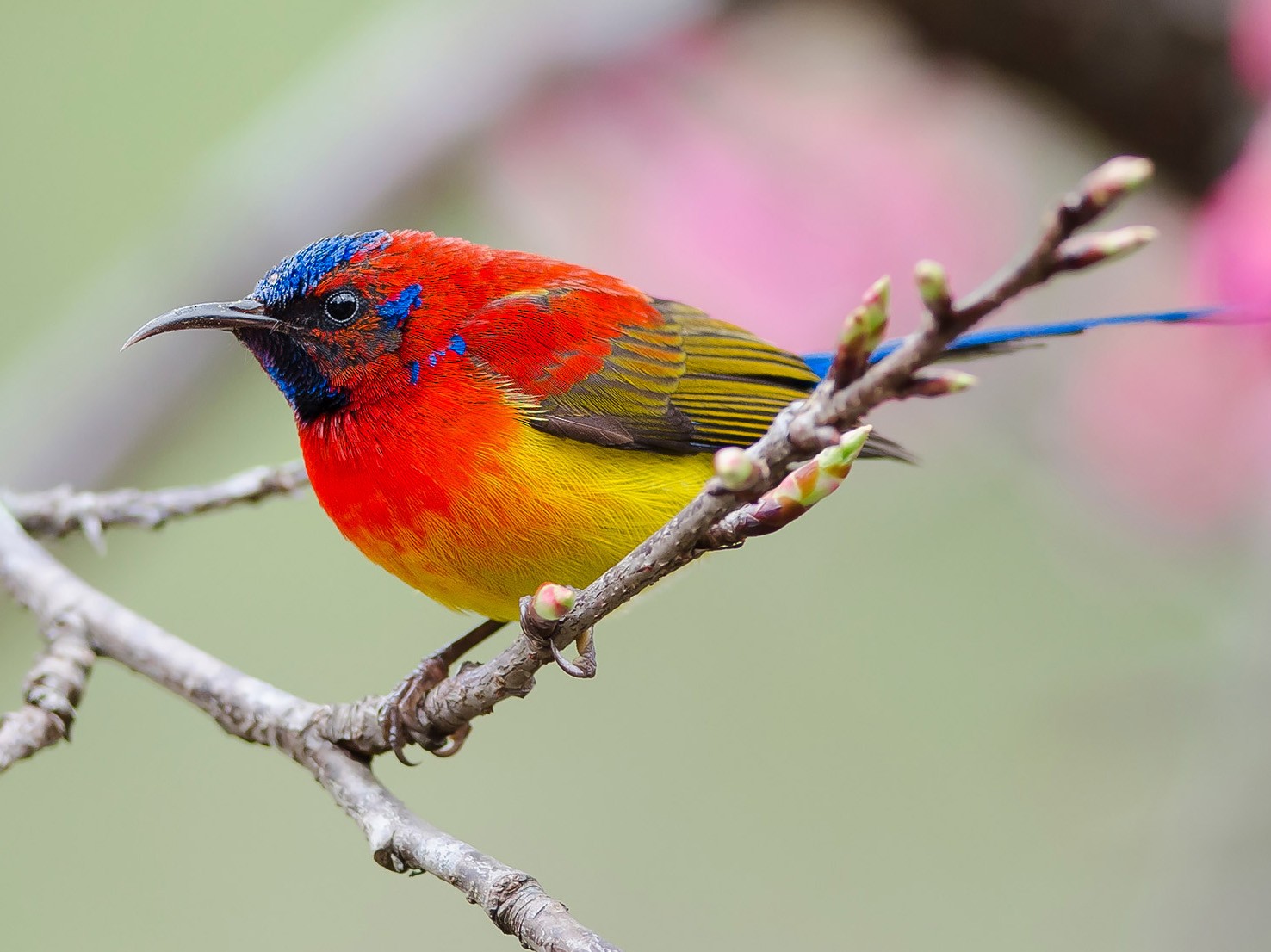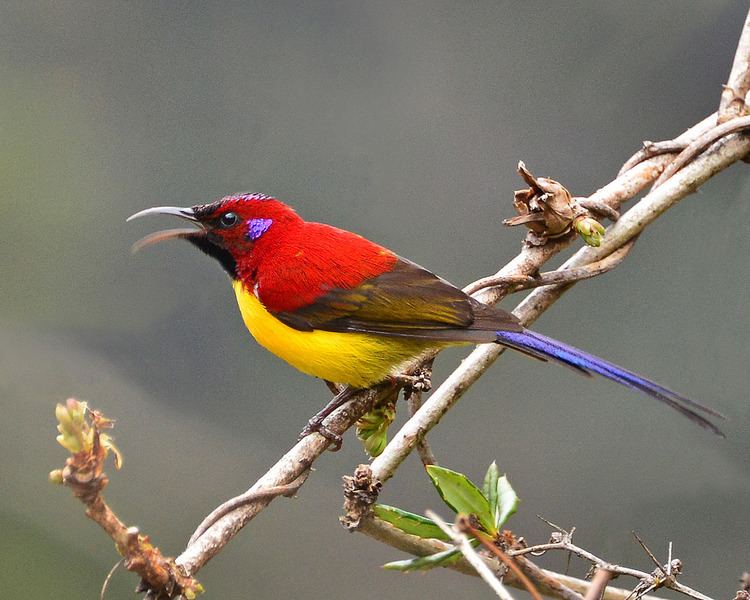The world of birds is full of unique and fascinating creatures, but one in particular stands out as a true gem: Mrs. Gould’s sunbird (Aethopyga gouldiae). Its remarkable beauty is sure to capture the attention of anyone lucky enough to encounter it. This bird boasts vibrant plumage, graceful flight, and an elegant form that showcases the magnificence of nature’s artistry. Join us on a journey as we explore the captivating colors, distinctive adaptations, and remarkable behaviors of Mrs. Gould’s Sunbird.
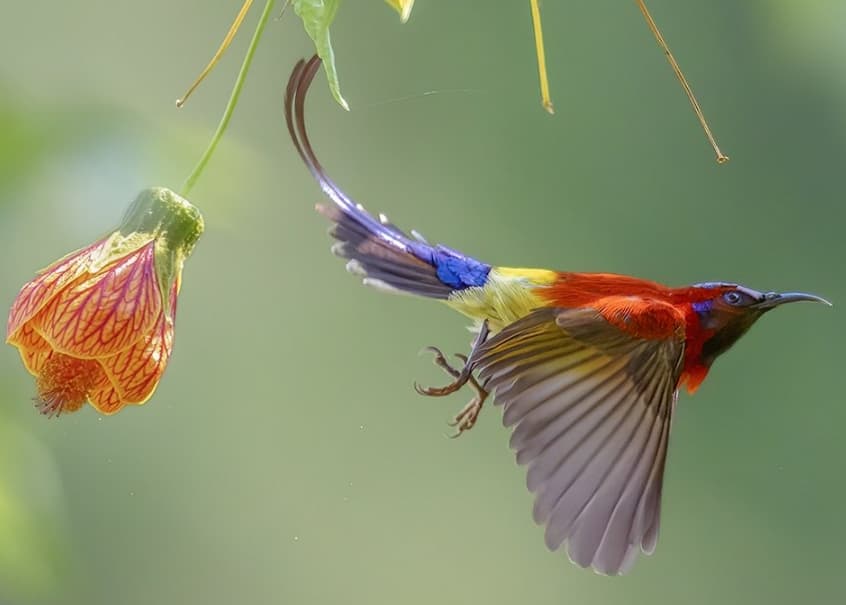
An illuminating sight
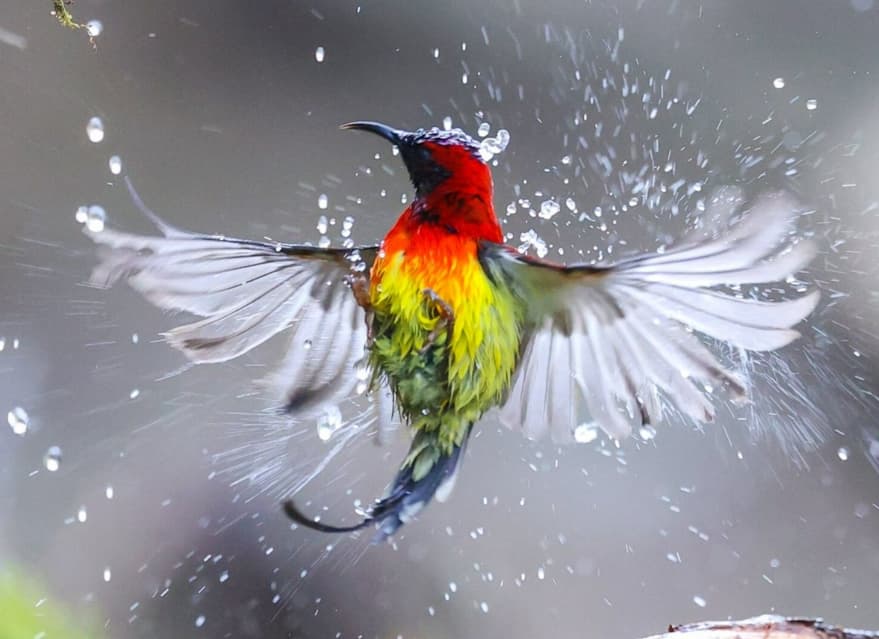
The Mrs. Gould’s Sunbird is a stunning bird with a magnificent blend of colors that leaves people in awe. The male bird is particularly impressive, with its plumage boasting iridescence and a vibrant range of hues. Its head has an intense metallic turquoise hue, which fades to a violet blue on the throat and upper part of the chest. The underside of the chest and belly are a beautiful ruby red, providing a striking contrast to the blue-green color of the back and wings. When the sunlight shines on this bird, it creates a kaleidoscope of colors that dazzles anyone who witnesses this avian gem.
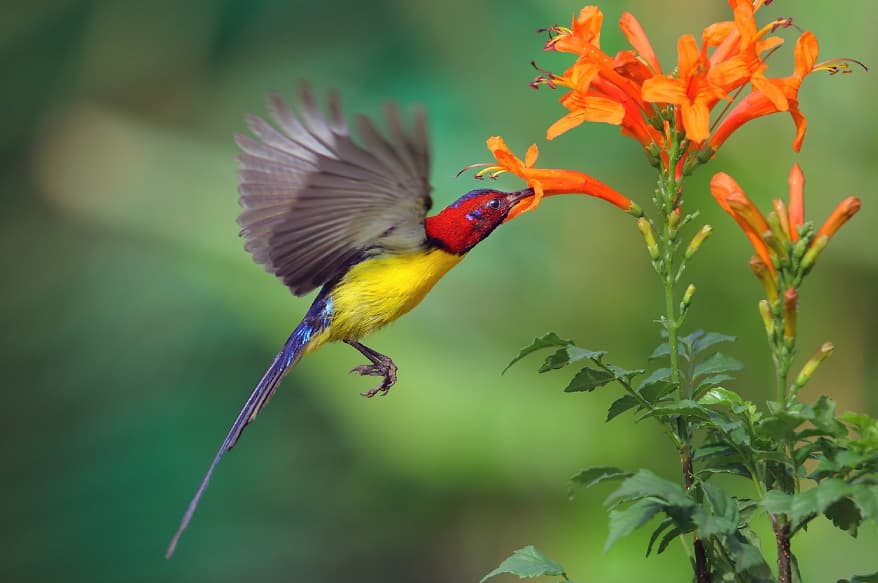
The female Sunbird belonging to Mrs. Gould may not be as showy as the male counterpart but has its own distinctive charm. It displays a subdued color scheme with olive green on top and a light yellow underside. This understated beauty helps her blend in with the foliage, making her an expert at staying hidden from predators while safeguarding her offspring and nest.
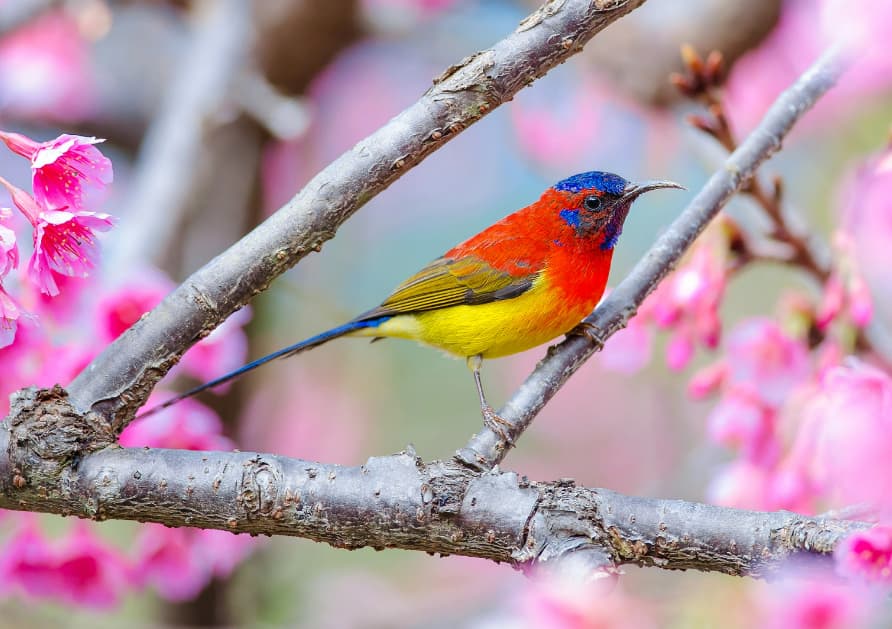
The inherent abilities of living organisms to adjust to their environment are known as natural adaptations.
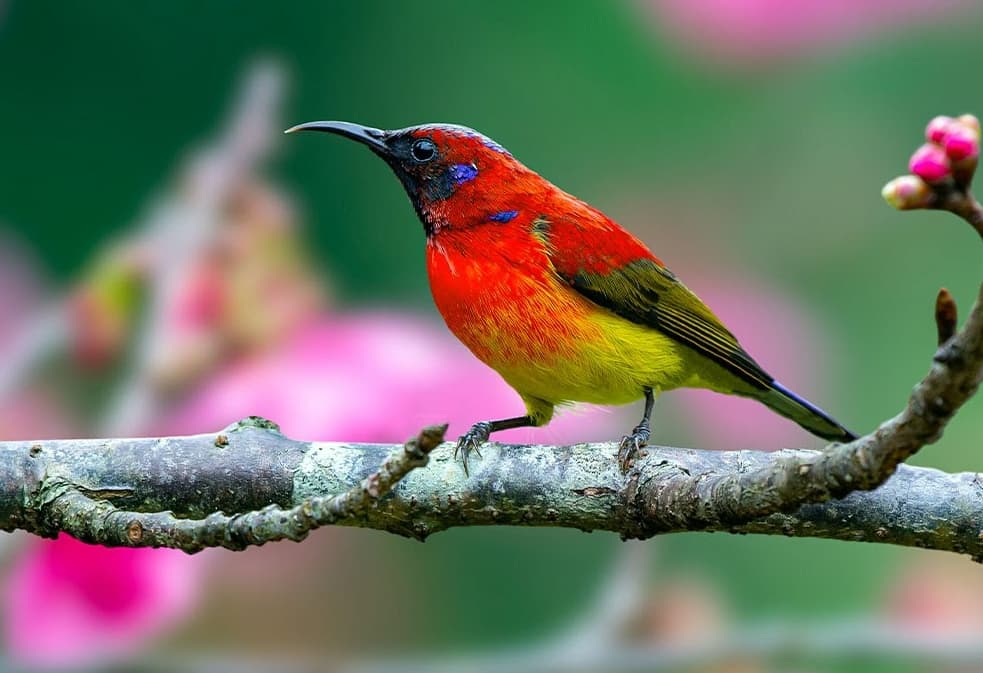
Apart from its stunning beauty, the Sunbird of Mrs. Gould has several adaptations that are essential for its survival and ecological importance. One of the most remarkable characteristics of this bird is its elongated and slim beak. This specialized beak is ideal for extracting nectar from deep inside the flowers. This particular adaptation enables the Sunbird to reach the nectar concealed within the tubular flowers and take advantage of the ample floral resources found in its environment.
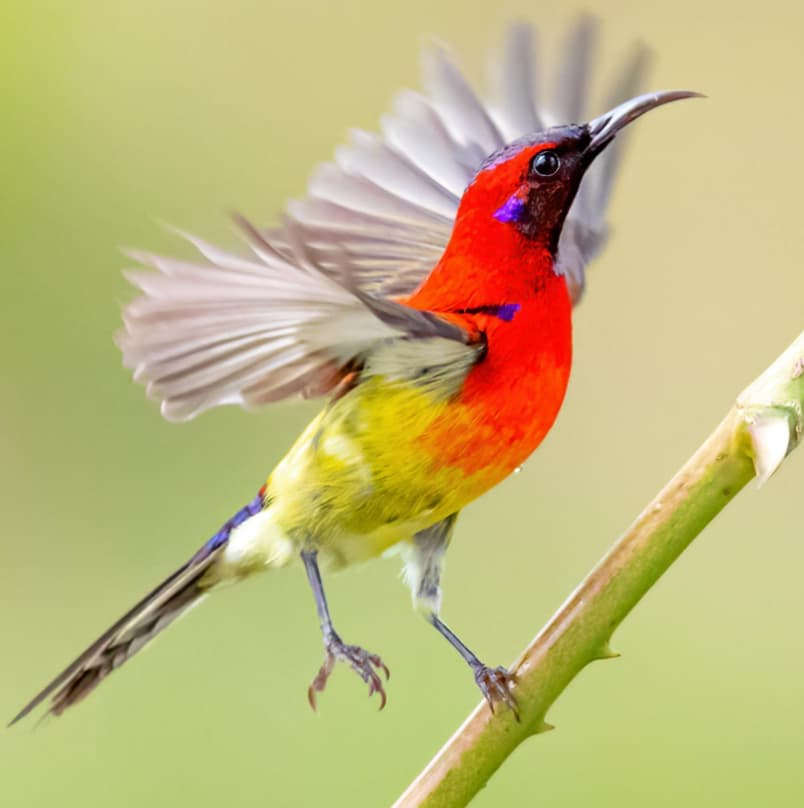
Aside from consuming nectar, Mrs. Gould’s Sunbird also incorporates small insects and spiders into its diet for added nutrition. This adaptable feeding habit showcases its vital role as a pollinator, moving pollen from one flower to another while searching for food. By doing so, the sunbird plays a significant role in assisting in the reproduction and variability of different plant varieties, ultimately contributing to the well-being of its surrounding environment.
Mating and reproduction
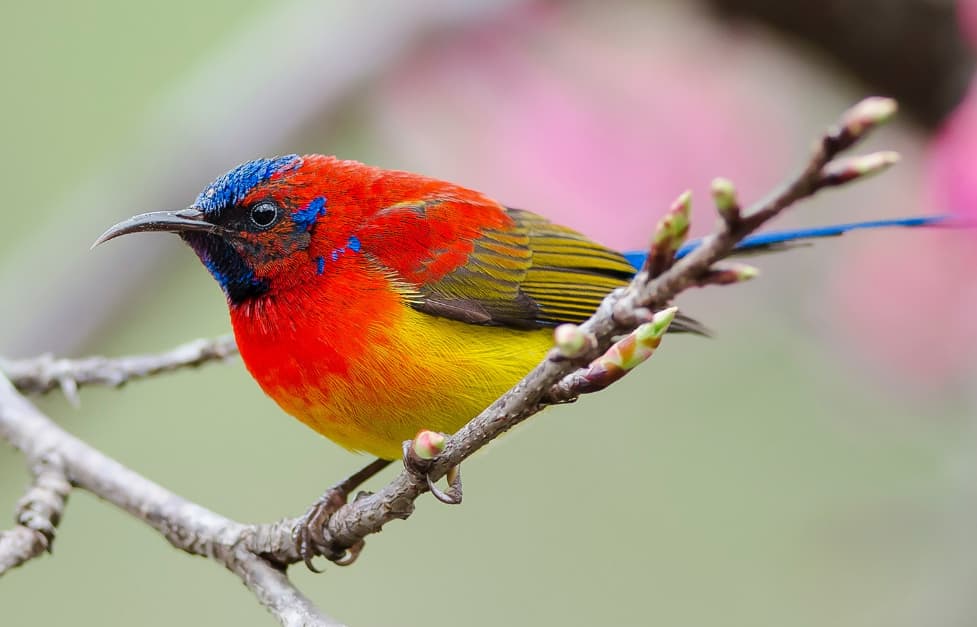
In the season of reproduction, the male Mrs. Gould’s Sunbird puts up a charming show of courtship rituals. The bird’s already bright feathers become even more striking as it performs an intricate dance in the air, displaying remarkable agility by swooping and diving. Its melodious songs and chirps accompany this acrobatic display, all aimed at attracting a potential partner.

After the male and female Mrs. Gould’s sunbird establish a connection, the female constructs a dainty cup-like home with plant fibers, moss, and cobwebs. She ingeniously blends it in with the surrounding foliage to protect her eggs. The mother bird devotedly nurtures her offspring until they are mature enough to venture out into the world independently.
Regarding location, the Mrs. Gould’s sunbird can be found in…
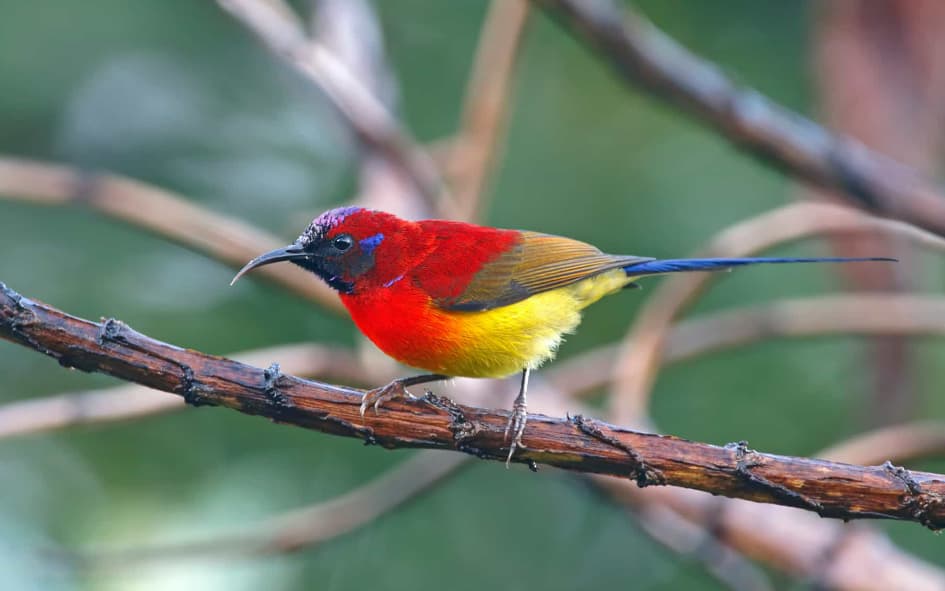
The Mrs. Gould’s sunbird is a colorful bird found in specific regions of the Himalayas, including Nepal, India, Bhutan, and parts of China. Its habitat is made up of wooded areas, bamboo forests, and bushes nestled in the middle of impressive mountainous landscapes, providing ample floral resources and shelter. This allows the sunbird to survive and thrive in its natural habitat. The Mrs. Gould’s sunbird is an excellent example of the diversity of the avian world, with its unique adaptations, vibrant plumage, and intricate courtship rituals. It serves as a reminder of nature’s intricate wonders and the importance of conserving biodiversity. By protecting this enchanting and beautiful creature, we ensure that future generations can continue to marvel at its fascinating colors and delicate grace.
